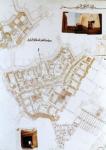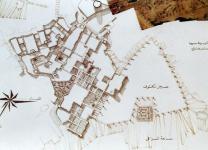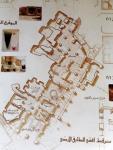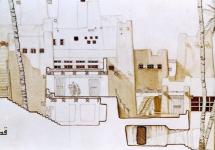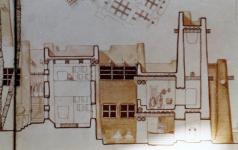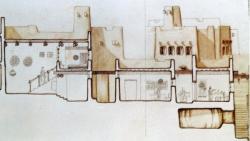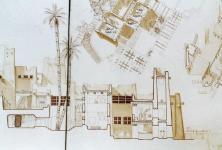This is my graduation Project from the fine arts faculty, Helwan University, Zamalek, Cairo, Egypt, 1983
The project was a Culture & Research Center
This was one of five topics to choose from.
The students who worked on that topic had to choose a community with different & special characteristics. I had chosen this place in one of the most special & spectacular community in Egypt.
Place & Location:
The Siwa Oasis lies in the Western desert of Egypt. It`s far away more than 800 KM from Cairo, where I was living and studying.
The place is far away and isolated from any modern civilization, at that time. It`s 300 KM to the south west of Marsa Mattrouh, the western desert governorate capital, which lies on the shore of the Mediterranean Sea, {see photos}.
Characteristics:
Siwa has its own special characteristics. It`s a depression in the desert {-17 meter} from sea level in an arid hot desert.
Its climate is very severe, very cold in winter {Zero degree centigrade at night}, and very hot in summer {45 degree centigrade}.
The average precipitation is 3 days every 11 years. But when rains it becomes very heavy.
Siwa Oasis is one of Egypt`s isolated settlements, with 23,000 people, mostly ethnic Berbers who speak a distinct language of the Berber family known as taSiwit. Its fame lies primarily in its ancient role as the home to an oracle of Amon, the ruins of which are a popular tourist attraction and gave the oasis its name.
Agriculture is the main activity of modern Siwi, mostly dates and olives, supplemented by handicrafts {like basketry}. Tourism has in recent decades become a vital source of income. Much attention has been given to creating hotels that use local materials and play on local styles.
Urban & Building characteristics:
The oasis has a lot of villages` lies distant from each other. Every one lies on limestone hills away from the cultivated lands and was circulated with walls to defend its people against thefts and concourses of the bidwians. This is no longer exists under the control of the modern state.
The land of the oasis is salty mud soil. When it dries it becomes very strong, the people calls it {Qurchief}. It was the only available building material at that time. When it rains, the walls of buildings melt down and the buildings become ruins, as it has a lot of salt in its component, {see photos}.
Some houses includes caves as a part of the house. It is very helpful to protect people from the sever wether.
The reinforced concrete was very rare and expensive. The people used to build their houses in a cooperative manner, so there was no labor cost.
As the oasis has a lot of palm woods the people used it for roofing their houses.
In now days, a lot of people abandoned their houses on the hills and come down to the flat land. They start building with RC.
Project concept:
The concept of the project was to preserve the original way of building and life style. Also to keep, acknowledge and revive the special characteristics of the oasis culture aspects including its vernacular architect.
To do this I`d chosen an abandoned area of the old village {Shali}, keeping its hilly characteristics, urban pattern, and building materials.
I used the hilly characteristics and urban pattern to articulate and separate the different functions of the center.
Project description:
The project composed of multi terraced floors.
The ground floor dedicated for exhibition {Indoor & outdoor}, art workshops and garage
The 1st floor designed to accommodate the second part of the exhibition, saloons, administration, audio video labs, and lectures - theater hall. It has old caves as part of the exhibition.
The 2nd floor includes the upper part of the lecture – theater hall, library, and the center director room.
The 3rd floor has the researcher`s offices which are separated from researcher guest house by path that is semi covered by the upper floor of guest house rooms.
The 4th floor has the upper part of the gues
1983
Cultural & Research Center by Abdullah Fouda in Egypt won the WA Award Cycle 3. Please find below the WA Award poster for this project.

Downloaded 527 times.
Favorited 2 times
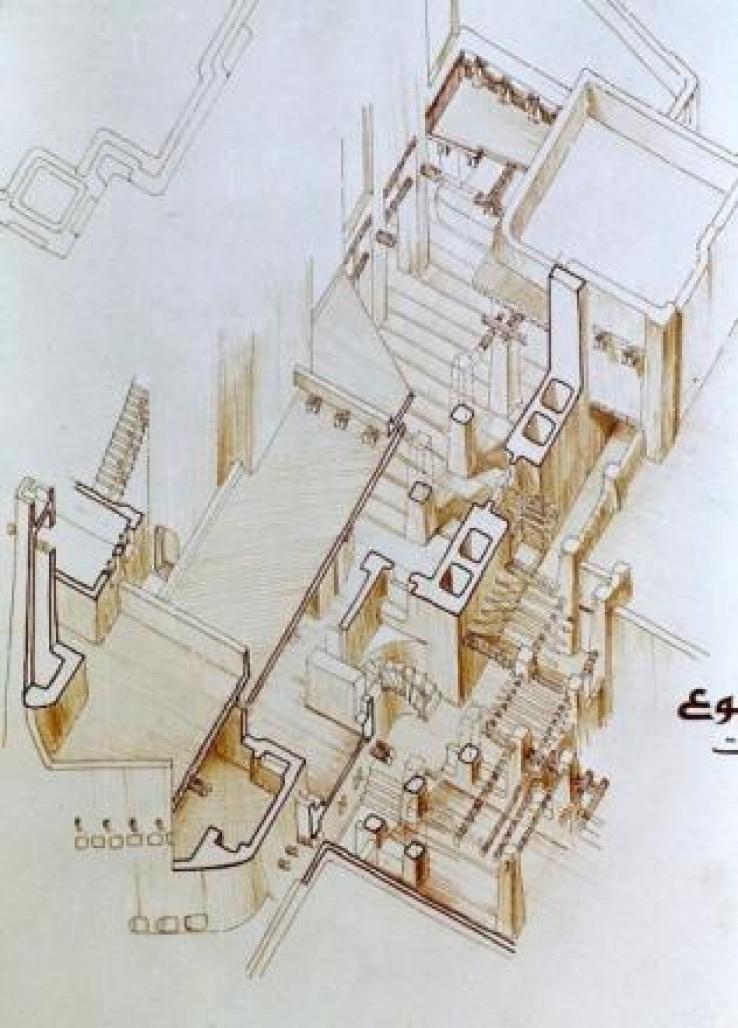


.jpg)
